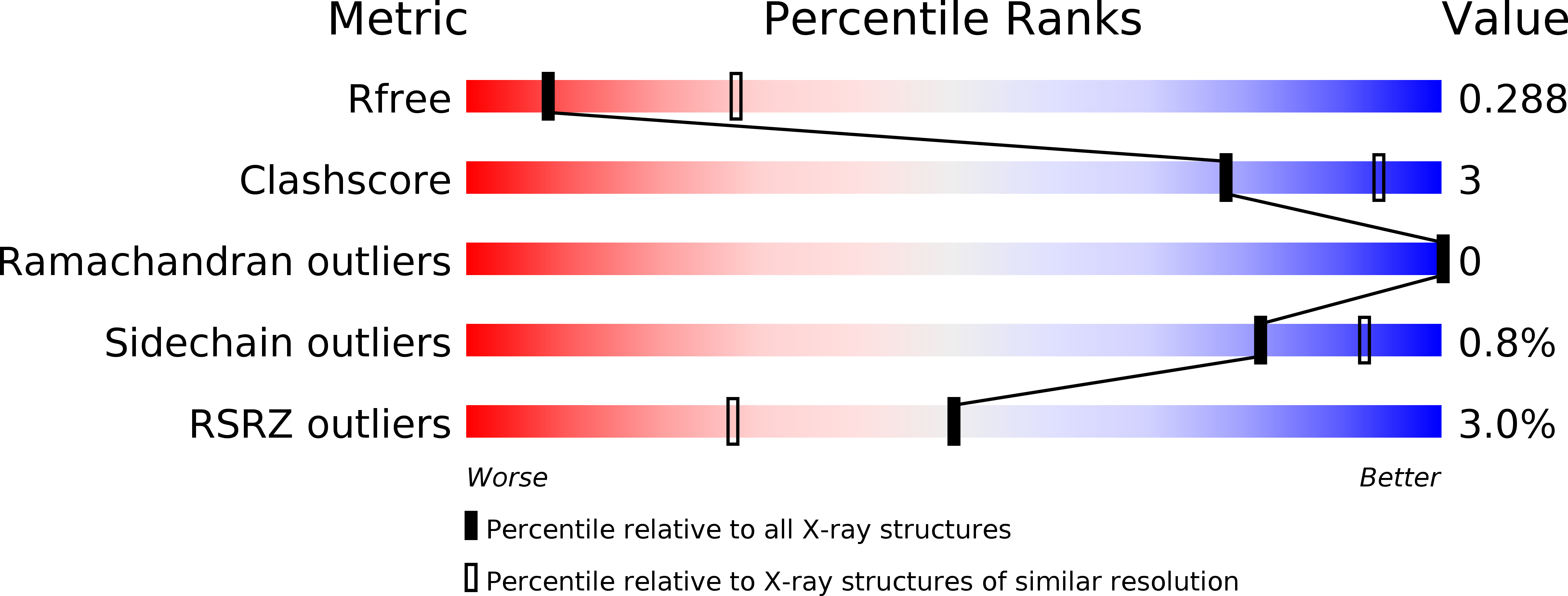The cubicon method for concentrating membrane proteins in the cubic mesophase.
Ma, P., Weichert, D., Aleksandrov, L.A., Jensen, T.J., Riordan, J.R., Liu, X., Kobilka, B.K., Caffrey, M.(2017) Nat Protoc 12: 1745-1762
- PubMed: 28771236
- DOI: https://doi.org/10.1038/nprot.2017.057
- Primary Citation of Related Structures:
5D6I, 5D6K, 5D6L, 5IYU - PubMed Abstract:
The lipid cubic phase (in meso) method is an important approach for generating crystals and high-resolution X-ray structures of integral membrane proteins. However, as a consequence of instability, it can be impossible-using traditional methods-to concentrate certain membrane proteins and complexes to values suitable for in meso crystallization and structure determination. The cubicon method described here exploits the amphiphilic nature of membrane proteins and their natural tendency to partition preferentially into lipid bilayers from aqueous solution. Using several rounds of reconstitution, the protein concentration in the bilayer of the cubic mesophase can be ramped up stepwise from less than a milligram per milliliter to tens of milligrams per milliliter for crystallogenesis. The general applicability of the method is demonstrated with five integral membrane proteins: the β 2 -adrenergic G protein-coupled receptor (β 2 AR), the peptide transporter (PepT St ), diacylglycerol kinase (DgkA), the alginate transporter (AlgE) and the cystic fibrosis transmembrane conductance regulator (CFTR). In the cases of β 2 AR, PepT St , DgkA and AlgE, an effective 20- to 45-fold concentration was realized, resulting in a protein-laden mesophase that allowed the formation of crystals using the in meso method and structure determination to resolutions ranging from 2.4 Å to 3.2 Å. In addition to opening up in meso crystallization to a broader range of integral membrane protein targets, the cubicon method should find application in situations that require membrane protein reconstitution in a lipid bilayer at high concentrations. These applications include functional and biophysical characterization studies for ligand screening, drug delivery, antibody production and protein complex formation. A typical cubicon experiment can be completed in 3-5 h.
Organizational Affiliation:
Membrane Structural and Functional Biology Group, School of Medicine and School of Biochemistry and Immunology, Trinity College Dublin, Dublin, Ireland.














